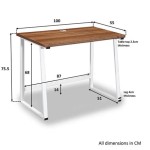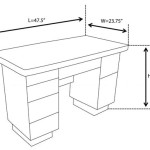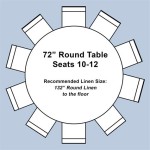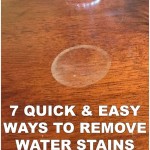Fixing a Laminate Table Top: A Comprehensive Guide
Laminate table tops are a popular choice for homes and offices due to their durability, affordability, and aesthetic versatility. However, despite their resilience, laminate surfaces are susceptible to damage from various sources, including impacts, heat, scratches, and moisture. When damage occurs, it can detract from the overall appearance of the table and potentially compromise its functionality. Fortunately, many types of damage to laminate table tops can be repaired with the right tools, materials, and techniques. This article provides a comprehensive guide to fixing a laminate table top, covering common types of damage and offering step-by-step instructions for effective repairs.
Before embarking on any repair project, it's crucial to accurately assess the extent and nature of the damage. This initial evaluation will determine the appropriate repair method and the necessary materials. Common types of damage to laminate table tops include scratches, chips, burns, water damage, and delamination – the separation of the laminate layer from the underlying substrate. Each type of damage requires a specific approach, and understanding the nuances of each is essential for a successful outcome.
Addressing Scratches on Laminate Table Tops
Scratches are perhaps the most common type of damage found on laminate table tops. They range in severity from superficial surface marks to deeper gouges that penetrate the laminate layer. The repair method depends largely on the depth and visibility of the scratch.
For minor surface scratches, a simple solution involves using a laminate repair paste or marker. These products are available in a wide range of colors to match the existing laminate finish. To use a repair paste, first clean the scratched area with a mild detergent and water, ensuring it is completely dry. Apply a small amount of the paste to the scratch, using a plastic putty knife or similar tool to spread it evenly. Wipe away any excess paste with a clean, damp cloth. If necessary, apply multiple thin coats to gradually fill the scratch. Allow the paste to dry completely according to the manufacturer's instructions.
Laminate repair markers are another option for addressing surface scratches. These markers contain a colored solution that fills in the scratch, making it less visible. The process is similar to using a paste: clean the area, apply the marker to the scratch, and wipe away any excess ink. It's crucial to select a marker color that closely matches the laminate finish to achieve a seamless repair. For slightly deeper scratches that aren't fully concealed with paste or marker, consider using a wood filler that is specifically formulated for laminate surfaces. Follow the manufacturer’s instructions for application, sanding lightly once dry, and then applying a matching laminate repair paint to blend the filled area.
For deeper scratches, a more involved repair process may be necessary. This typically involves using a laminate repair kit, which contains a range of products, including fillers, colorants, and sealants. These kits are designed to address more significant damage and provide a more durable repair. The process generally involves cleaning the damaged area, applying a filler to fill the scratch, sanding the filler smooth, applying colorants to match the laminate finish, and sealing the repaired area to protect it from future damage. Patience and attention to detail are crucial for achieving a successful repair with a laminate repair kit.
Repairing Chips and Burns on Laminate Surfaces
Chips and burns represent more significant damage to laminate table tops. Chips usually result from impacts, while burns are typically caused by hot objects placed directly on the surface. Repairing these types of damage requires a more comprehensive approach than simply addressing scratches.
To repair a chip in a laminate table top, start by cleaning the damaged area and removing any loose debris. If the chip is relatively small, a laminate repair filler can be used to fill the void. Apply the filler according to the manufacturer's instructions, ensuring it is packed firmly into the chipped area. Allow the filler to dry completely, and then sand it smooth with fine-grit sandpaper, blending it seamlessly with the surrounding laminate surface. Once the filler is smooth, apply a color-matched laminate repair paint or marker to conceal the repair and restore the original appearance of the table top.
For larger chips or areas where the laminate is completely missing, a more extensive repair may be necessary. This could involve patching the damaged area with a piece of matching laminate. Carefully cut a piece of laminate that is slightly larger than the chipped area. Apply a strong adhesive to the back of the patch and carefully position it over the damaged area. Use a roller or similar tool to apply pressure to the patch, ensuring it adheres firmly to the underlying substrate. Once the adhesive has dried completely, use a router or laminate trimmer to trim the edges of the patch flush with the surrounding surface. Sand the edges smooth and apply a sealant to protect the repair.
Burns on laminate table tops can be challenging to repair, depending on the severity of the damage. For minor surface burns, try using a laminate repair paste or marker to conceal the discoloration. Clean the burned area thoroughly and apply the paste or marker according to the manufacturer's instructions. Wipe away any excess product and allow it to dry completely. If the burn is more severe and has damaged the underlying substrate, a more involved repair may be necessary. This could involve removing the damaged laminate layer and replacing it with a patch of matching laminate, similar to the process for repairing large chips. In some cases, it may be necessary to replace the entire laminate table top if the burn is too extensive or if it has compromised the structural integrity of the table.
Addressing Water Damage and Delamination
Water damage can cause significant problems for laminate table tops, leading to swelling, warping, and delamination. Delamination occurs when the laminate layer separates from the underlying substrate, often due to prolonged exposure to moisture. Addressing water damage and delamination requires a careful approach to prevent further deterioration.
If a laminate table top has been exposed to water, the first step is to dry the surface thoroughly. Use a clean, dry cloth to wipe away any standing water and allow the table to air dry completely. Use a dehumidifier in the room to aid the drying process, especially if the humidity is high. Avoid using heat sources, such as hair dryers or heaters, as these can cause the laminate to warp or crack.
Once the table is completely dry, assess the extent of the damage. If the laminate has begun to swell or warp, it may be difficult to restore it to its original condition. In some cases, it may be possible to flatten the warped area by placing heavy objects on top of it for an extended period. However, this may not always be effective, and the warping may return over time.
Delamination is a more serious problem that requires a different approach. To repair delamination, carefully lift the loose laminate layer and apply a thin layer of strong adhesive to the underside. Use a roller or similar tool to apply pressure to the laminate, ensuring it adheres firmly to the underlying substrate. Clamp the repaired area to hold the laminate in place while the adhesive dries completely. Once the adhesive has dried, remove the clamps and assess the repair. If necessary, use a putty knife to remove any excess adhesive that has squeezed out from under the laminate.
Preventing water damage is essential for extending the lifespan of a laminate table top. Always use coasters or placemats to protect the surface from spills and condensation. Clean up spills immediately with a clean, dry cloth. Avoid placing wet items directly on the table top. Regularly inspect the table for signs of water damage, such as swelling, warping, or discoloration. By taking these precautions, it is possible to minimize the risk of water damage and keep a laminate table top looking its best for years to come.
In addition to the specific repair methods described above, there are several general tips that can help to ensure a successful repair of a laminate table top. Always work in a well-ventilated area, especially when using adhesives or solvents. Wear appropriate safety gear, such as gloves and eye protection, to protect against potential hazards. Carefully follow the manufacturer's instructions for all products used in the repair process. Take plenty of time and avoid rushing the repair, as this can lead to mistakes. If unsure about any aspect of the repair process, consult with a professional or seek advice from a trusted source.
Ultimately, the key to successfully fixing a laminate table top lies in accurately assessing the damage, selecting the appropriate repair method, and carefully following the instructions. With patience, attention to detail, and the right tools and materials, it is possible to restore a damaged laminate table top to its original condition and extend its useful life. Remember to prioritize prevention by using protective measures and addressing spills promptly to avoid more extensive repairs in the future.

The Easiest Way To Repair Laminate Countertop Chips Exquisitely Unremarkable

How To Repair A Laminate Table Bunnings Work Community

Laminate Countertop Repair Reglue Loose Edges Family Handyman

How To Repair A Deep Scratch In Your Laminate Countertop

How To Fix Bubbled Laminate Furniture

Table How Can I Repair A Hole In Wood Laminate Kitchen Countertop Home Improvement Stack Exchange

The Easiest Way To Repair Laminate Countertop Chips Exquisitely Unremarkable

How To Save An Old Laminate Table With Gel Stain The Boondocks Blog

How To Fix Bubbled Laminate Furniture

How To Fix Bubbled Laminate Furniture








